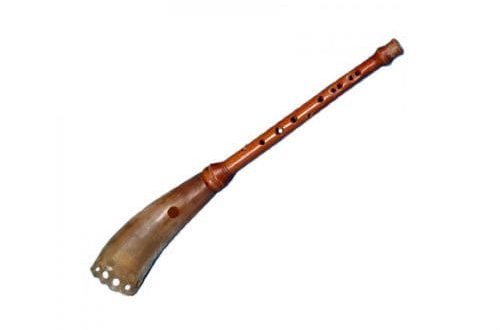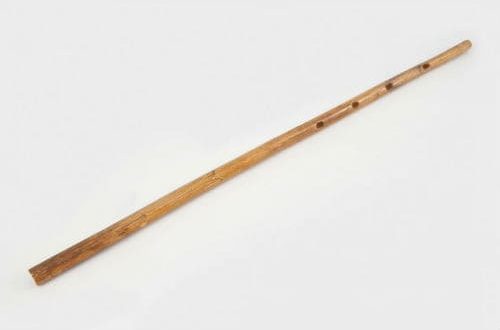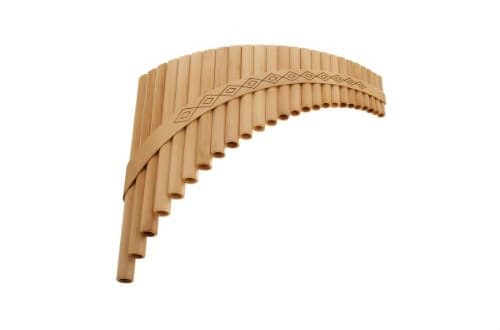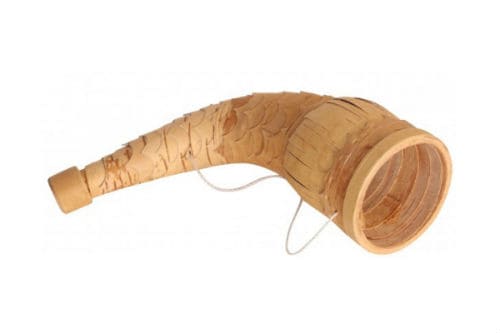
Horn: tool description, composition, varieties, history, use
Contents
Among the variety of musical instruments, there are not so many native Russians. One of them is a wooden horn, which has gone from a faithful companion of shepherds to a full-fledged member of folk ensembles and orchestras.
What is a horn
The horn is a Russian folk instrument made of wood (in the old days, birch, maple, and juniper wood served as the material). Belongs to the group of wind. The closest “relatives” are the hunting horn, the shepherd’s trumpet.

Initially, it performed a non-musical function: it served to attract attention, to give an audible signal in case of danger. It was distributed among shepherds, watchmen, warriors. Much later, it began to be used to play dance and song melodies.
The range of a horn is approximately equal to an octave. Professionals manage to extract 7-8 sounds, amateurs have access to a maximum of 5. The instrument sounds bright, piercing.
Tool device
The object looks extremely simple: a conical wooden tube equipped with six small holes. Alternately closing the holes, the craftsman extracts the sounds of the desired height.
The upper, narrow part ends with a mouthpiece – an element responsible for extracting sounds. The wide lower part is called the bell. The bell provides good sound transmission, is responsible for bright intonations.
The length of the tool is different (within 30-80 cm).

History of origin
The name of the creator of the horn is unknown, as well as the time of appearance. Its original function, signaling by shepherds, suggests that the first regions of the distribution of horn instruments were territories occupied by cattle breeders and farmers (modern lands of Poland, the Czech Republic, and Finland).
Horn became entertainment several centuries ago. The cone-shaped design was used during rituals, weddings, folk festivals.
The first documentary mentions in Russia about the instrument date back to the second half of the XNUMXth century. But it spread throughout the country much earlier. These written testimonies already state that the instrument is widespread throughout the territory of the Russian state, mostly among the peasant population.
The shepherd’s horn was made according to the same principle as the shepherd’s horns: the halves of the body were fastened together with birch bark. There was a one-day version: the shepherd made it from willow bark. Removing the willow bark, tightly twisted it in a spiral, getting a pipe. It was called disposable, as it sounded until the bark dries. The idea of a one-day tool belonged to the peasants of the Tula region.
The horn was introduced to the world as an original Russian instrument in the XNUMXth century. This period was marked by the creation of the Vladimir Horn Players Choir (headed by N.V. Kondratiev). Initially, the ensemble performed within its own province, then was invited to perform in the capital.
At the end of the XNUMXth century, the Kondratiev Choir gave concerts in Europe. Each performance was accompanied by an unprecedented success. It was then that the Russian horn was firmly entrenched in the ensemble of folk instruments. At the beginning of the XNUMXth century, the repertoire of the Vladimir choir was recorded on gramophone records.
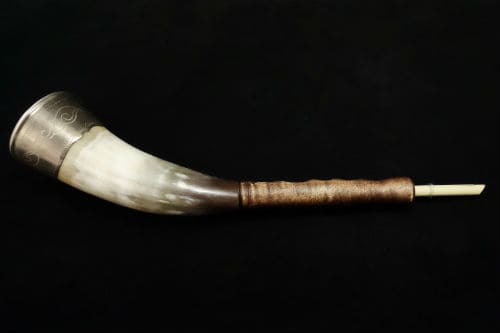
Varieties
Classification is carried out according to two main features: performance, region of distribution.
By execution
There are 2 types:
- Ensemble. This includes two types of horns, opposite each other in size and sound. The minimum in size (a little over 30 cm in size) is called a “squealer”, the maximum (from 70 cm in size) is called a “bass”. used in ensembles. Harmoniously combined with the piano, balalaika, drummers.
- Solo. It has medium dimensions, in the region of 50-60 cm, is called “half-bass”. Demanded by solo performers. A decent range of sound allows you to perform a wide repertoire of musical works.
By region
The regions where the horn spread improved the design in accordance with their own folklore. Today, the following varieties are distinguished:
- Kursk;
- Kostroma;
- Yaroslavl;
- Suzdal;
- Vladimirsky.
The Vladimir variant gained the greatest popularity – thanks to the activity of the above-described Vladimir Horn Players Choir. It was the creative activity of N.V. Kondratiev brought glory to the horn, its transition from an instrument of shepherds to ensemble playing.
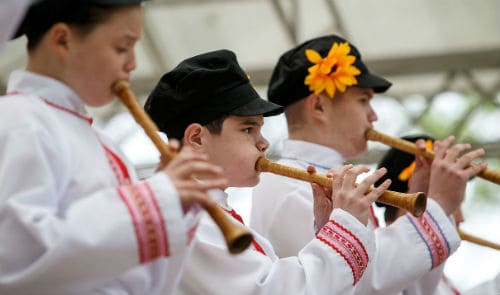
Using
Shepherds have not used horns for a long time. The place of this instrument today is in Russian folk ensembles, orchestras. Enough and solo performers, skillfully managing the difficult to use design.
The program of concerts of folk ensembles, which include horn players, includes the most diverse music: lyrical, dance, soldier, comic, wedding.
How to play the horn
It’s hard enough to play. The instrument is primitive, it is not easy to extract the desired sound from it. It will take serious practice, breathing training. Even just getting a beautiful smooth sound will not work right away, it will take months of preparation.
The design is adapted to direct sounds, without trills, overflows. Some virtuosos have adapted to perform tremolo, but this requires great professionalism.
The purity of the tone, the loudness of the sound directly depend on the strength of the air supply. The sound is changed by alternately clamping the holes located on the body.
The technology of the Play is similar to the flute.



